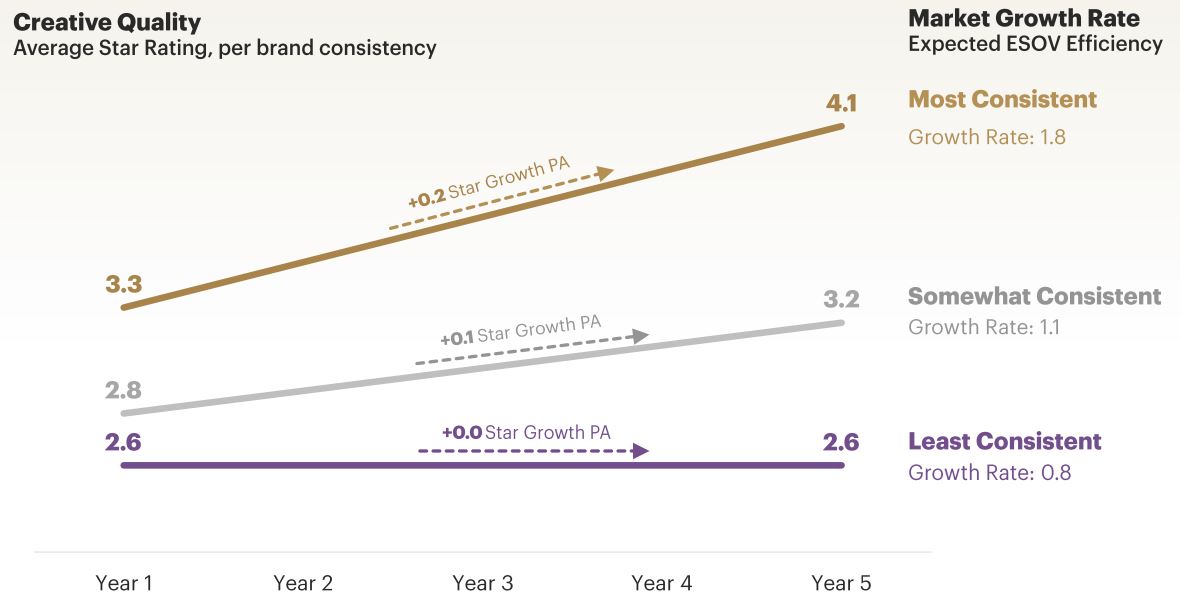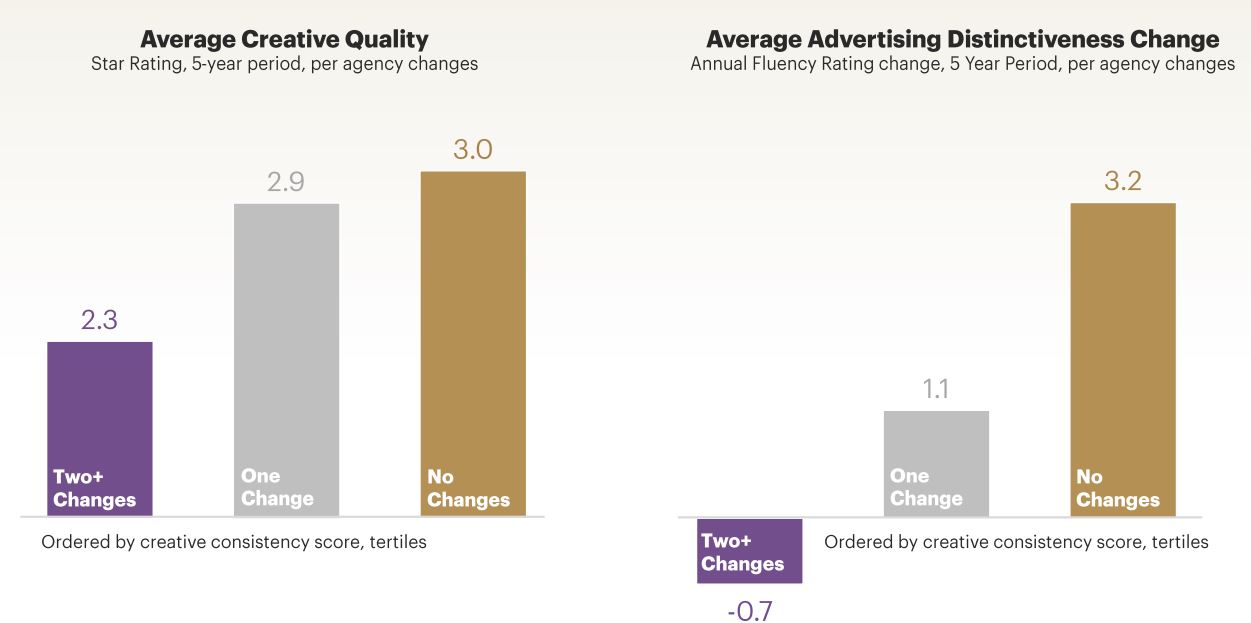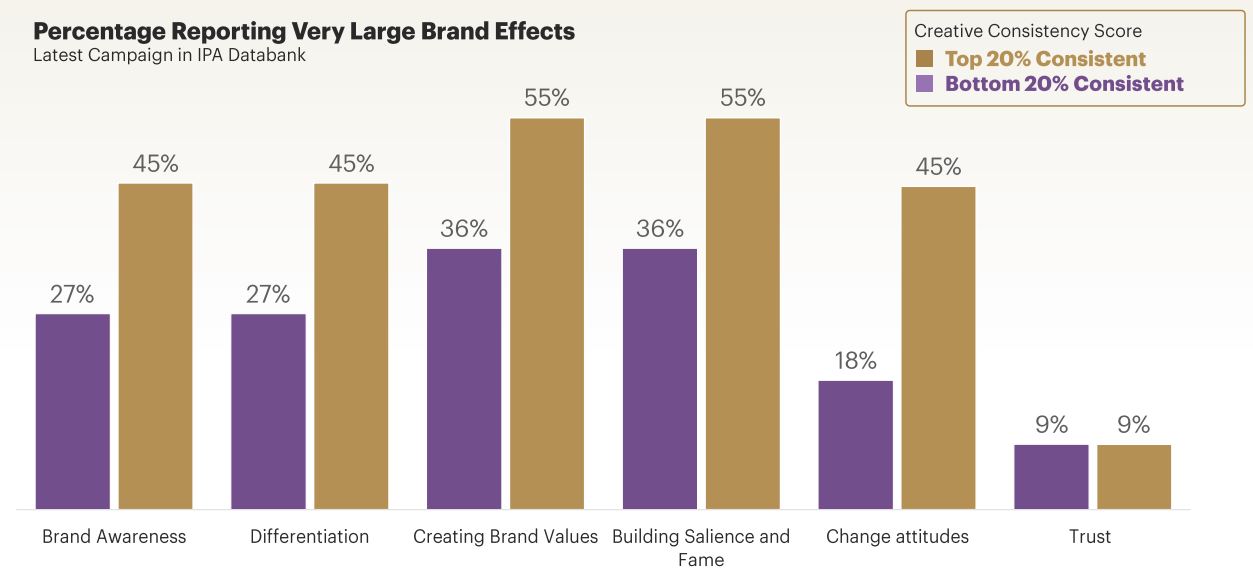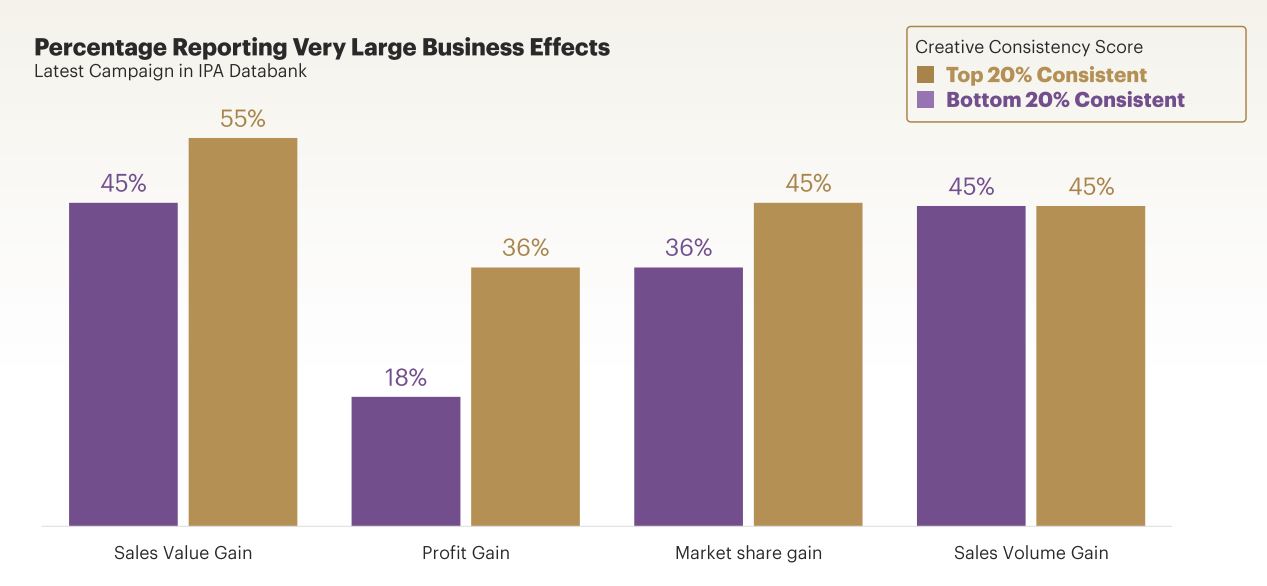Creative consistency is key to building stronger brands, according to new research from System1, the Creative Effectiveness Platform, with data from the IPA’s Effectiveness Databank.
Compound Creativity, a first-of-its-kind study, analysed brands across channels for 13 new creative consistency features, looking at 4,000+ ads from 56 brands across 44 categories, spanning 5 years and representing £3.3 billion in TV ad spend.
The study showcases that a new brand metric measured over multiple years, Creative Consistency Score (CCS), is linked to creative quality, brand strength, and brand and business effects. These findings are derived from System1’s Test Your Ad platform, which tests consumers’ emotional responses to advertising to predict short- and long-term brand-building potential, brand effects data from the IPA and YouGov, and business effects reported from the IPA Effectiveness Databank, a robust collection of more than 1,500 awards entries from the last 40 years.
The findings include:
Consistent brands produce higher creative quality
The most creatively consistent brands in the study average a Star Rating of 3.3, predicting ‘Good’ long-term brand-building potential, compared to 2.8-Stars for somewhat consistent brands and 2.6-Stars for the least consistent brands.
Consistent brands produce higher creative quality

Advertising from consistent brands improves in creative quality year on year, creating a compound effect
The most consistent brands saw their average Star Rating increase annually (+0.2 Star Rating), whilst the least consistent brands saw no growth in their creative quality. After 5 years, advertising from the most consistent brands is expected to grow market share more than twice as effectively than the least consistent brands (given the same media spend).
Consistency compounds creativity

Brands that switch creative agencies regularly create lower-quality ads
Brands that maintain the same creative agency within a 5-year period produce higher creative quality and grow their advertising distinctiveness. Similarly, brands that allow creatives to wear in produce higher-quality ads.
Sticking with your creative agency improves creative quality

Consistent brands are stronger brands
Campaigns from the most consistent brands create +27% more Very Large Brand Effects, generating more brand awareness, differentiation, brand values and salience. And they are more likely to change consumer behaviour. The more consistent brands are more popular and famous according to YouGov’s brand tracking.
Consistent brands are stronger brands

The most consistent brands generate more business effects
In linking the IPA Effectiveness Databank metrics against the brands’ creative, the study found that the most consistent brands (top 20%) achieve +28% more Very Large Business Effects, including sales value gain, profit gain, market share gain and more.
What creative consistency does do for business

Creative inconsistency is costly for brands
Brands that are somewhat consistent or the least consistent have to spend more to achieve the same level of growth as the most consistent brands. The cost of change is estimated at £3.47 billion over the next 5 years.
“This groundbreaking study with data from the IPA shows that brands win big on fame building, profit gain, market share gain and more when they foster a culture that supports creativity and consistency,” said Andrew Tindall, SVP, Global Partnerships, System1. “In practice, this can be accomplished through longer tenures with creative agencies, a commitment to continually leverage distinctive assets within multi-year, cross-channel campaigns and the understanding that ads should be given the time to wear in with consumers.”
“Fusing data from System1 and the IPA Effectiveness Databank has provided us with an insightful piece of research to add to our toolkit,” said Pretty Nimoh, Project Lead, IPA Databank. “Agencies and brands can now be more confident that maintaining consistency in brand positioning and creative style can compound the effects of their campaigns.”
About Creative Consistency Score (CCS)
The research identified 13 new Creative Consistency features that had a significant impact on effectiveness over the 5-year period. These include:
- Consistent Creative Foundations: Consistent Brand Positioning, Consistent Creative Idea, Creative Agency Relationship Tenure. Brands must focus on getting these foundations right before relying on consistency.
- Culture of Consistency: Use of Creative Wear In, Cross Channel Consistency, Commitment to “Showmanship”, Reusing Creative Assets. Brands need to embed consistent ways of working across their organisation.
- Consistent Execution: Consistent Brand Assets, Tone of Voice, Brand Slogan, Celebrities, Brand Characters and Soundtrack. What has previously only been considered when discussing creative consistency.